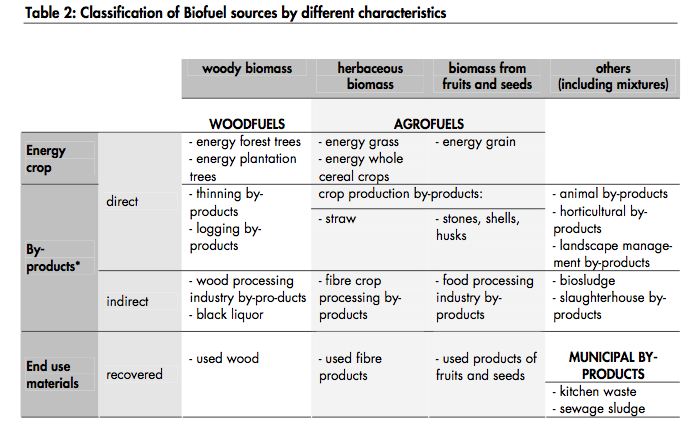Biofuels
Introduction
Biofuels are liquid or gaseous fuels produced from biomass that are generally high in sugar (such as sugarcane , sugarbeet , sweet sorghum) , starch (such as corn and cassava) or oils (such as soybeans, rapeseed, coconut, sunflowers, and palms).[1] The two most commonly used biofuels are ethanol and biodiesel.[2]
.
Classification of Biofuel Sources
Classification of Biofuel sources according to Food and Agricultural Organization (FAO)[3].
- *The term “by-products” includes the improperly called solid, liquid and gaseous residues and wastes derived from
Classification of biofuel according to generations
Biofuels are generally classified as first , second and third generations:
First-generation biofuels are made from sugar, starch, vegetable oil, or animal fats using conventional technology. These are generally produced from grains high in sugar or starch fermented into bioethanol; or seeds that which are pressed into vegetable oil used in biodiesel. Common first-generation biofuels include vegetable oils, biodiesel, bioalcohols, biogas, solid biofuels, syngas.
Second-generation biofuels are produced from non-food crops, such as cellulosic biofuels and waste biomass (stalks of wheat and corn, and wood). Common second-generation biofuels include vegetable oils, biodiesel, bioalcohols, biogas, solid biofuels, and syngas. Research continues on second-generation biofuels including biohydrogen, biomethanol, DMF, Bio-DME, Fischer-Tropsch diesel, biohydrogen diesel, mixed alcohols and wood diesel.
Third-generation biofuels are produced from extracting oil of algae – sometimes referred to as “oilgae”. Its production is supposed to be low cost and high-yielding – giving up to nearly 30 times the energy per unit area as can be realized from current, conventional ‘first-generation’ biofuel feedstocks.[4]
Biofuel: Ethanol
Ethanol (CH3CH2OH)is an alcohol fuel made from the sugars found in grains such as corn sorghum, barley and in plant products such as potato skins, rice, sugar cane, sugar beets , yard clippings , bark and switchgrass.[5]<o:p></o:p>
Ethanol can be produced by a process called gasification. Gasification systems use high temperatures and a low-oxygen environment to convert biomass into synthesis gas, a mixture of hydrogen and carbon monoxide. The synthesis gas, or "syngas," can then be chemically converted into ethanol and other fuels.[6]
References
- ↑ http://biofuelsandthepoor.com/facts-and-definitions/
- ↑ http://www.nrel.gov/learning/re_biofuels.html
- ↑ Unified Bioenergy Terminology ftp://ftp.fao.org/docrep/fao/007/j4504e/j4504e00.pdf, page 9
- ↑ http://biofuelsandthepoor.com/facts-and-definitions/
- ↑ http://www.eia.gov/energyexplained/index.cfm?page=biofuel_home
- ↑ http://www.nrel.gov/learning/re_biofuels.html




















